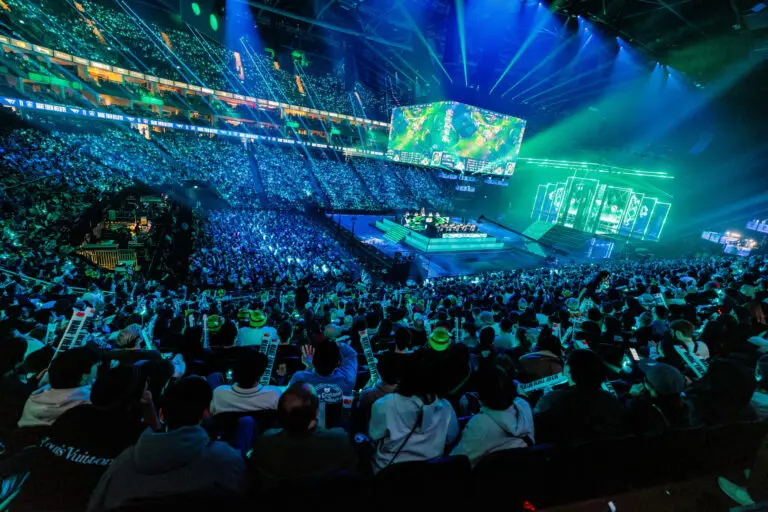It’s no secret that sponsorship deals, new releases and tournaments are among the reasons for the success of the gaming industry. Esports organisations have not always been large companies, but now they are focusing on building sustainable brands. This development implies a mature ecosystem where longevity, fan loyalty, and cultural relevance are top priorities. The question arises as to how esports organisations can create a unique brand and fit into all these criteria. Some organisations rely on significant investments and short-term sponsorship deals, while others are looking for new strategic approaches that echo traditional sports while maintaining digital uniqueness. In this article, we’ll explore how these organisations are turning hype into popularity and lasting value.
From Competitive Identity to Lifestyle Branding
Many esports teams started out as purely a collection of players for tournaments. These competitive organisations were created primarily to win tournaments. However, modern branding in esports is now largely about lifestyle integration. Teams such as NAVI, FaZe Clan, and G2 Esports are examples of this shift, positioning themselves as fashion brands, content studios, and cultural platforms in addition to being competitive teams.
The current strategy blurs the lines between gaming, music, art and entertainment. Famous teams sell merchandise, collaborate with famous artists, and even create their own documentaries. In other words, esports brands go beyond tournaments and enter everyday life. Their long-term value is no longer determined solely by places in tournaments, fans are paying attention to the cultural footprint as an indicator, and over time, it becomes more sustainable and monetised.
Fan Engagement, Tools, and Digital Experiences
Esports fans are as passionate about their favourite teams as fans of traditional sports. Organisations understand and create economic strategies and invest to deepen the connection between their brand and their communities. Most often, this includes interactive content, fan servers on Discord, and gift giveaways.
Let’s move on to some rather unobvious strategies that focus on increasing loyalty and improving customisation. We are talking about special programs, such as valorant sensitivity converter, that help players to specialise the game for themselves and make it more convenient. What further increases loyalty is customisation and participation. Fans are often looking for such tools and take the settings of professional players as a basis. This is where the team’s brand comes into play, and it can make money by advertising. These tools, while practical, also create an emotional affinity and trust in the brand.
By investing in these small but meaningful touchpoints, esports brands are strengthening their position not only as entertainment providers, but also as technologically advanced platforms that empower both players and fans.

Building Infrastructure and Expanding Beyond the Game
Leading esports organisations today go beyond an online presence and tournament play. More and more of them are investing in the development of infrastructure, including the creation of team academies, headquarters, and training facilities. Such facilities perform several functions at once, ranging from improving the comfort and efficiency of training esportsmen to building brand credibility. A striking example is the T1 headquarters in Seoul or the Team Liquid Alienware training complex in Los Angeles, which serve as a modern analogue of sports training centres, demonstrating the seriousness of intentions and the scale of an esports organisation.
But it’s not only about buildings. Franchising in leagues like League of Legends and Overwatch has encouraged organizations to operate like sports clubs, with long-term planning, regional identities, and deeper business models. Ownership of player contracts, scouting systems, and long-term brand strategies are replacing opportunistic decision-making.
The development of an esports infrastructure creates consistency and reliability, two factors that are essential for brand development. It is also an indicator of the company’s stability and a good foundation for future victories.
Diversification: Content, Talent, and Markets
The esports industry is a dynamic industry, with metas changing quite frequently, tournaments fluctuating, and rosters that can collapse or form overnight. To ensure long-term relevance and stability, organisations diversify their assets.
Content creation is usually at the centre of this approach. Owners invest in streamers, bloggers, and YouTubers to create content about the esports organisation, thereby promoting the brand. Modern tools increase the audience reach and fan base. They follow the room not only for the results of the game but for the personality and lifestyle. This diversifies revenue and protects the brand from a decline in performance or popularity of the game.
Another key vector of development is entering new markets. From launching teams in new game disciplines to opening regional offices in Asia, Europe, or Latin America, modern esports organisations operate on a global scale. Adapting content and corporate identity to local audiences allows them to attract fans outside the English-speaking world. This approach not only helps to reduce dependence on individual regions, but also gradually transforms esports brands into full-fledged international media structures.
Conclusion
Putting the facts together, we can say that the long-term development of esports organisations reflects the industry’s growth. Success is no longer measured only by wins and brand equity, but also by fan retention and cultural relevance. Esports organisations use certain strategies and elements and invest in infrastructure to build a successful and recognisable brand.
Esports branding is no longer just a logo on a t-shirt, it is an evolving identity that lives on in the games people play, the content they consume, and the communities they belong to. Those who recognise this and act accordingly are shaping the future of the gaming industry.
Also Read-Revolutionizing Digital Content with AI Video Face Swap Technology


